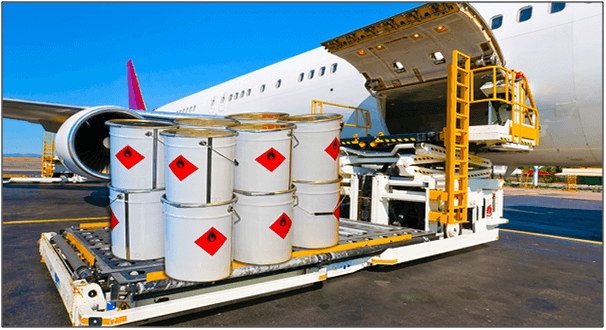Cambodia’s Dangerous Goods Transport Rules: A Breakdown
As Cambodia’s logistics sector expands rapidly in response to growing trade volumes, the transport of dangerous goods (DG)—such as chemicals, batteries, flammable liquids, and compressed gases—has become a key issue for logistics providers, manufacturers, and exporters. Understanding and complying with Cambodia’s rules and international standards is critical for avoiding penalties, minimizing environmental risks, and protecting supply chain credibility.
In this guide, we break down Cambodia’s dangerous goods transport regulations, the challenges companies face, and how logistics agents can support compliance and safety.
What Are Dangerous Goods?
Dangerous goods, also known as hazardous materials, refer to substances that pose a risk to health, safety, property, or the environment during transportation. Common categories include:
-
Explosives (Class 1)
-
Gases (Class 2)
-
Flammable liquids (Class 3)
-
Flammable solids (Class 4)
-
Oxidizing substances (Class 5)
-
Toxic and infectious substances (Class 6)
-
Radioactive materials (Class 7)
-
Corrosives (Class 8)
-
Miscellaneous (Class 9)
Cambodia broadly follows the UN Model Regulations on the Transport of Dangerous Goods, issued by the UN Economic Commission for Europe (UNECE), and regional ASEAN guidelines.
Cambodian Regulatory Bodies and Framework
Cambodia’s dangerous goods transport is governed by a combination of international conventions, national laws, and ministerial regulations. The key regulatory stakeholders include:
-
Ministry of Public Works and Transport (MPWT) – Oversees road transport standards.
-
Ministry of Industry, Science, Technology & Innovation (MISTI) – Regulates chemical production and safety.
-
General Department of Customs and Excise (GDCE) – Enforces import/export controls.
-
National Authority for Chemical Weapons Convention (NACWC) – Manages chemical control and compliance with international treaties.
The foundation of dangerous goods rules comes from:
-
The Law on Land Transport (2014)
-
Sub-Decree No. 113 on Chemical Management
-
Customs Prakas No. 163 on Import-Export of Hazardous Goods
-
Cambodia’s adherence to the ASEAN Framework Agreement on Multimodal Transport (AFAMT)
More on Cambodia’s regulatory framework:
🔗 MPWT – Official Website
🔗 Cambodian Customs
🔗 NACWC Cambodia
Packaging, Labeling, and Documentation Requirements
Dangerous goods transported by land, sea, or air in Cambodia must follow strict packaging and labeling guidelines:
✅ Labeling Requirements:
-
UN number and hazard class label
-
Handling instructions (in English and Khmer)
-
Emergency contact information
✅ Packaging Standards:
-
Must comply with UN Performance Packaging Codes
-
Leak-proof and shock-resistant containers
-
Clearly marked with DG hazard class stickers
✅ Documentation:
-
Material Safety Data Sheet (MSDS)
-
Dangerous Goods Declaration (DGD)
-
Import/Export License for controlled substances
For air shipments, IATA Dangerous Goods Regulations (DGR) apply. Learn more:
🔗 IATA DGR 2024
Training and Licensing Requirements
Only certified transport companies and drivers are permitted to move dangerous goods. The MPWT mandates:
-
DG driver certification courses covering emergency handling, labeling, and transport protocols.
-
Vehicle licensing specifically for DG transport, with requirements for proper equipment (fire extinguishers, GPS tracking, protective gear).
Companies must provide ongoing training aligned with ASEAN guidelines and UN recommendations. Cambodian agents help manage this training and ensure personnel meet international standards.
Challenges in Dangerous Goods Transport in Cambodia
Despite regulations, Cambodia’s DG logistics ecosystem faces several challenges:
-
Limited enforcement in rural areas
Many provincial roads lack proper DG signage and inspection stations. -
Infrastructure limitations
Not all ports, border checkpoints, or warehouses are equipped for DG handling or containment. -
Lack of centralized tracking
Unlike countries with digital DG management platforms, Cambodia relies heavily on manual reporting. -
Cross-border coordination
Moving DG across borders (Vietnam, Thailand, Laos) requires different documentation and bilateral agreements.
How Logistics Agents Support Compliance
Engaging a local agent can significantly reduce risks in DG transportation. Cambodian agents typically provide:
-
End-to-end compliance management (permits, customs clearance, packaging checks)
-
DG-specific route planning to avoid high-risk zones or restricted areas
-
Warehouse inspections and coordination with DG-certified storage providers
-
Training facilitation for staff and drivers
-
Emergency response planning and insurance arrangements
Explore how agents support international trade compliance:
🔗 Cambodia-Agent.com – Agent Services Overview
Case Example: Shipping Lithium-Ion Batteries from Phnom Penh
A global electronics firm shipping lithium-ion batteries from Phnom Penh to Singapore faced multiple hurdles:
-
Customs delays due to missing DGD forms
-
Improper battery labeling flagged by ASEAN border officials
-
Lack of temperature-controlled warehousing for bulk storage
A Cambodian agent intervened, corrected documentation, ensured UN-approved packaging, and partnered with a certified DG truck fleet for transport. The shipment cleared borders smoothly, saving the client from penalty fees and reputational damage.
Conclusion: Compliance Is a Competitive Advantage
Cambodia’s dangerous goods transport rules are evolving rapidly to align with international norms. For foreign businesses and exporters, compliance is not just a legal requirement—it’s a brand differentiator and risk mitigation tool.
By working with certified logistics agents and staying informed on the latest rules, businesses can transport DG safely, efficiently, and profitably.
✅ Useful Resources and Links
-
UN Dangerous Goods Regulations Overview
-
IATA Dangerous Goods Manual
-
Cambodia-Agent.com – Logistics Services
